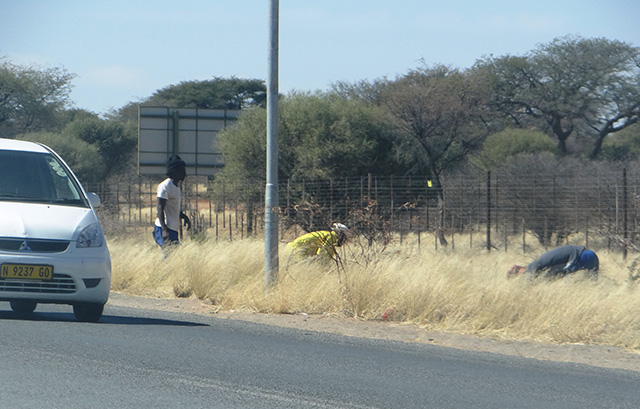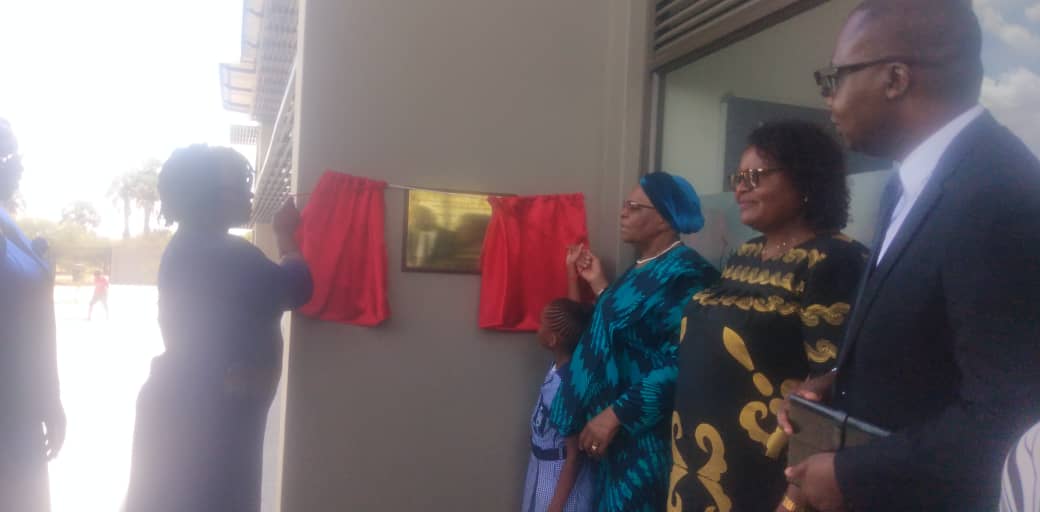• CHARLES TJATINDION any given day, pickup vehicles loaded with grass make their way in and out of Gobabis, the capital of the ‘Cattle Country’ of Omaheke.
The grass is not brought from any cattle feed outlet or retail chain, but literally cut from the streets of Gobabis.
This has been a relatively popular phenomenon on this side of the country, as farmers make a last-ditch effort to save their ailing animals hit hard by the frequent drought the country is accustomed to.
The farmers have been making use of the abundance of grass that grows at the town of Gobabis for this purpose, which if not cut, would wither and dry out as there are no livestock grazing on it.
A large number of those who make use of the free grass are from the Aminuis constituency, which has constantly been ravished by persistent onslaughts of drought almost every year.
The Aminuis constituency within the Omaheke region has for the past decade or so experienced severe drought, which has led to a loss of thousands of livestock.
Overgrazing at most villages there, coupled with illegal camping on land, has drastically reduced good grazing land in the constituency.
The farmers spent up to three days raking in enough grass supply for their animals, which they stack in old 50-kilogramme sacks.
The grass becomes dry, and therefore loses vital nutrients with time due to its extended exposure to the sun. But for hundreds of farmers, it is as good as any grass for their frail livestock.
“We have no choice but to go this route. If we do not do this, our livestock will die because there is no grazing at all – the land is completely void of grass,” farmer Kavijenene Kambirongo told Nampa.
Another farmer, Sam Hambira, said he has been cutting grass at Gobabis for the past five years – an exercise he describes as fruitful.
“We cut the grass and stock it up in our sheds at the village for animal consumption. It has been working for me all these years, and has really saved my weakest animals,” he added.
Local unemployed residents of Gobabis have used the farmers’ needs to makesome money by offering to cut and stack up the grass for them.
Gert Goseb wakes up at the break of dawn every day to travel to the outskirts of Gobabis where the grass is plenty, and gets to work.
Once he has cut enough grass, he would pile it in the sacks, and wait for a farmer in need of grass to buy.
“At times, a farmer would approach us to cut grass for him, which we do. But at other times, we simply cut the grass and wait for passing motorists to buy it,” he explained.
Cutting the grass is not exactly rocket science, but making sure that he stacks enough grass in each bag is somewhat a challenge.
“Farmers would often complain that the bags are not packed evenly, or at times ask us the weight of the bags. I would cite any figure that comes to mind, as I have no idea what these bags weigh,” he said candidly.
Endless hours of toiling in the sun, especially on an empty stomach, has its disadvantages, but Goseb and others like him who do not have much formal education are not relenting – it is a decent way of making money.
Other residents have gone a step further and expanded to collecting camelthorn tree pods – a sought-after commodity by farmers who grind them with grass to make animal feed.
The pods are collected everywhere around town where camelthorn trees grow, even in private yards.
A bag of pods is sold for between N$20 and N$30.
Nancy Swartkalf, a single mother of four, wakes up on a typical day and sets out for town, where the pods are in abundance. She would approach residential properties, and politely ask owners if she could assist in “clearing the residence of the camelthorn pods’ dirt”.
Some would let her in, while others would simply shut the gate on her and return inside or drive off.
“It’s a hustle, but at least we are not stealing, and choosing to work with our own hands – that in itself is a comforting thought,” she said as she gathers the pods with a long stick she has turned into a rake.
Just behind her, her three young daughters are hard at work packing the pods into two bags. Once this process is done, the eldest son – watching from a distance – steps in, gathers the bags over his shoulders, and the entourage proceeds to the next site.
The next day, the process will continue for Goseb and Swartkalf, at least for as long as there are grass and pods, and there are willing buyers.
Dry or not, the grass is indeed the ‘Green, Green Grass of Home’ for these residents and farmers alike, as it sustains them in one way or another.
– Nampa
Stay informed with The Namibian – your source for credible journalism. Get in-depth reporting and opinions for
only N$85 a month. Invest in journalism, invest in democracy –
Subscribe Now!






